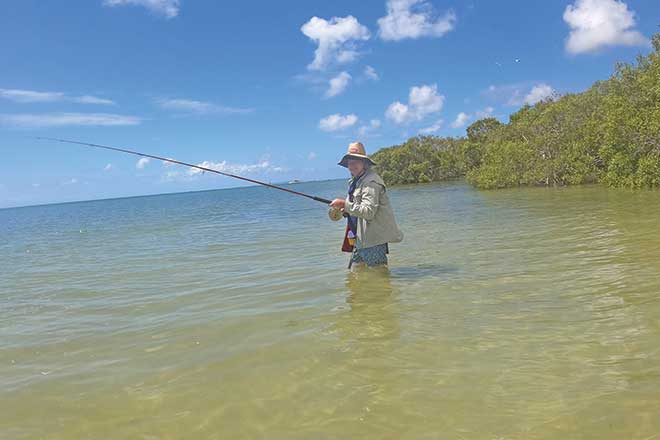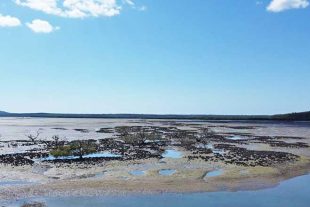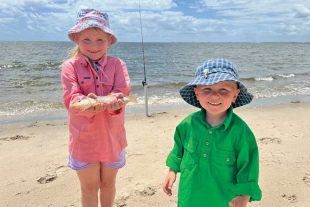For those new to fishing or who don’t have the resources or space for a boat, land-based fishing could be the only option.
Even for people who do have a boat, land-based fishing can be relaxing and also very productive when you know where and when to fish.
And for those who might not be able to afford a boat or prefer more exercise on the water, a kayak is a very handy transport vehicle to getting to land-based fishing spots further afield.
Reliance on technology
It’s true, owning a boat opens up more options.
A boat gives you access to a wealth of technology – from stealthy electric motors, GPS and side scan sounders to water temperature readings, radars, devices to stimulate fish feeding and more.
In fact, sometimes we get so addicted and reliant on this technology that we forget about the basics, whether it’s reading a map or reading the water with your eyes.

If you can’t break your technology addiction, there are a plethora of mobile devices you can use from the shore, including portable fish finders you can Bluetooth to your phone and GPS units.
But I enjoy going back to basics.
Simply angler against fish.
The only difference is that the primal instinct to catch food to survive is replaced by the sheer pleasure of having your feet planted on the sand, the bank or in the water while admiring the beautiful sights and sounds of so many fishing locations up close.

My message for those of you who rarely get out of the boat or think you need one to catch fish is to think again.
Not only can land-based fishing be occasionally more productive than when fishing from a boat, it’s also a lot of fun, great exercise and saves you the hassle of launching, retrieving and cleaning your vessel!
Given the high price of fuel, it can also save you plenty of dollars.
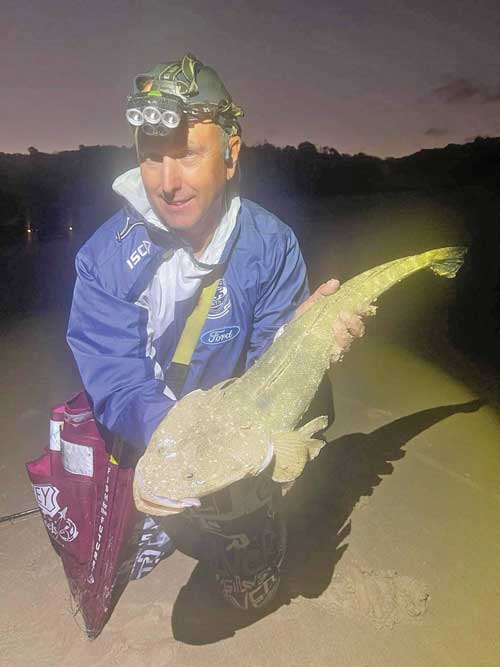
Yet another great option, which gives you the best of both worlds, is to do a combination of boat and land-based fishing during your day on the water.
This gives you the option to fish different areas at the times and tides that suit them.
There are loads of options for land-based fishing, whether it’s the serenity of fishing a river, lake, dam or an estuary on foot.
Some advantages over a boat
Obviously if your main form of fishing is reef, you have no choice but to fish from a boat.
The focus of this article is on areas – such as estuaries or freshwater rivers or lakes – where you have a choice of fishing from the boat and shore.
As you are more restricted in how far and quickly you can move on foot, it is even more important to target land-based locations wisely.
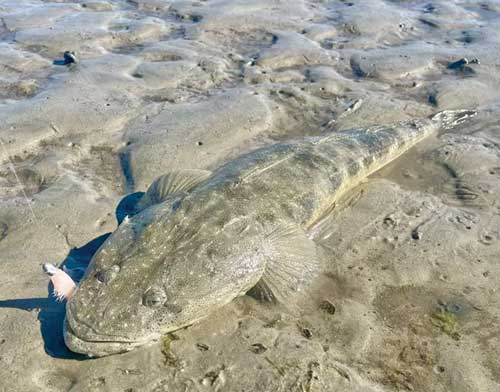
Yet, being on foot does give you a few advantages.
Such as:
- You can fish much shallower areas such as drains that whiting, flathead and trout might frequent in low-light periods
- You have a lot more room to cast and can get right into the tight spots that can’t be accessed with a boat
- It’s much easier to be stealthy and spot fish, then sight cast to them
- You can move between nearby locations without disturbing the fish by walking over land or quietly wading the shallows, rather than spooking them with the motor or shadow of a boat
- If bait fishing, you can pump yabbies at the edge of the water and create a berley trail while you fish with set rods.
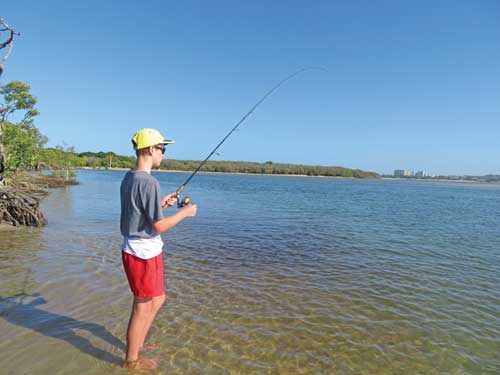
Areas to target
As land-based fishing might be the only fishing experience for newcomers or casual anglers, they can be uncertain of where to go.
This can unfortunately lead to comfort and ease-of-access influencing where they decide to throw a line.
Which could be straight into featureless water off a riverbank in front of where they parked the car, the busiest area of the beach where the sand track comes out or simply casting as far as they can off a nearby jetty into open water away from the jetty structure.
Likewise, even normally productive estuary flats can be unproductive if you fish the hard featureless sand devoid of bait (such as yabbies and worms) and lacking structure, holes, ribbon weed or rocks.
So where are some of the best types of land-based locations?
The areas you should be looking for are listed below according to whether you’re fishing the salt or freshwater.
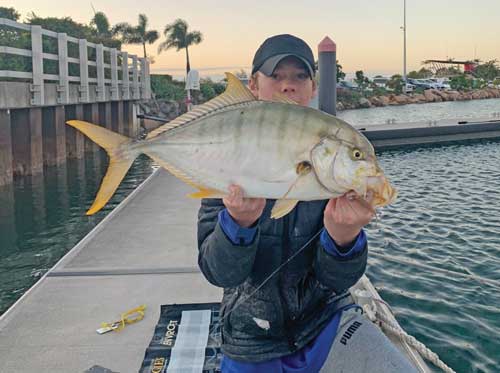
Whatever location you choose, simply follow a few key principles:
- Use live or very fresh bait
- Fish as light as you can
- Use long traces and appropriately matched rods and reels.
Beach
Suggested target areas include:
- Shallow low tide gutters for whiting
- Gutters near isolated rocks and headlands will often hold bream, tarwhine, dart and even soft reef fish
- Deeper gutters with close back banks or steeply shelving beaches are good for tailor and are best at dawn or dusk and into the night, though don’t discount them at high tide during the middle of the day
- Deep isolated holes or deep water close to shore with plenty of bait are spots worth targeting mulloway at night.
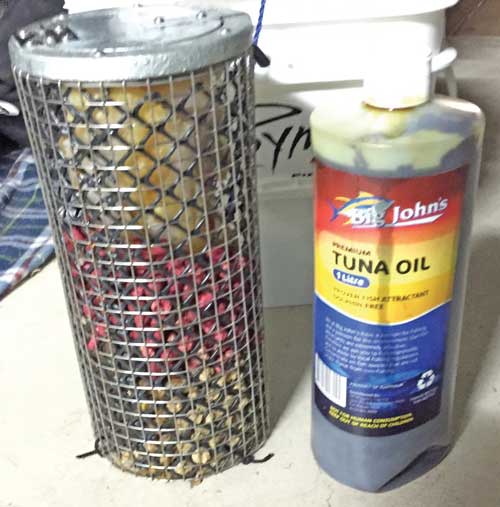
Estuaries
Recommended target areas include:
- Shallow sand flats covered in yabby holes – fish the drains and little gutters on these flats up to the mangroves or the water’s edge on the faster rising tide, as well as the early stages of the falling for fish such as whiting and bream
- Entrances to shallow drains and creek mouths on the falling tide for flathead
- Edges of weed beds and drop-offs for flathead on the falling tide
- Rock walls at the entrance to the estuaries, making sure to change your technique according to the tide for fish such as tailor, salmon, mulloway and luderick on weed baits in winter
- Boat ramps with fish-cleaning facilities – target these spots with fish flesh bait, particularly late in the day or at night when most boats are gone
- Sandy estuary entrances using live worms for whiting and bream, and yabbies or soft plastics for flathead
- Directly under land-based structure such as jetties during the day using lightly weighted bait or lures, remembering to use a tight drag to drift your lines down under the shade and near the pylons where the fish feed
- Safe jetties and marinas are great spots for kids to fish using lightly weighted bait such as peeled prawns or pilchard pieces and using berley to attract the fish
- Marinas and jetties can also be top spots for more advanced anglers throwing and jigging lightly weighted lures for a myriad of species
- Bridge and jetty pylons at night, the boundary line between bridge lights on the water and the dark area beyond are good spots for tailor, flathead, mangrove jack and jewfish, as baitfish are attracted to the lights and predators often lurk at this boundary line.

Freshwater dams and lakes
Optional target areas include:
- Recently drowned green grassy banks holding worms and grubs after rainfall or snowfall (down south), particularly at night or dawn
- Drowned timber using lures, bait under floats or unweighted bait such as shrimp
- The steeper bank side of river bends that are carved out and form a deeper backwater
- If legal to do so, the deep water near dam walls and downstream from the overflow after water is released
- Off the bank among rocky structure such as granite boulders
- Creek offshoots from dams
- Pull up on lake islands in a boat and fish the steep side during the day or shallow side at dawn and dusk.

For those of you who want to get out of the boat more or simply want to get into land-based fishing, these are productive spots to try your luck.
Be sure to use plenty of berley, particularly around the slower change of tide periods in saltwater estuaries.
I hope these tips help you get into the fish.
For more tips from Skip, check out my Facebook page at facebook.com.au/ontourfishingaustralia
 Bush ‘n Beach Fishing Magazine Location reports & tips for fishing, boating, camping, kayaking, 4WDing in Queensland and Northern NSW
Bush ‘n Beach Fishing Magazine Location reports & tips for fishing, boating, camping, kayaking, 4WDing in Queensland and Northern NSW

